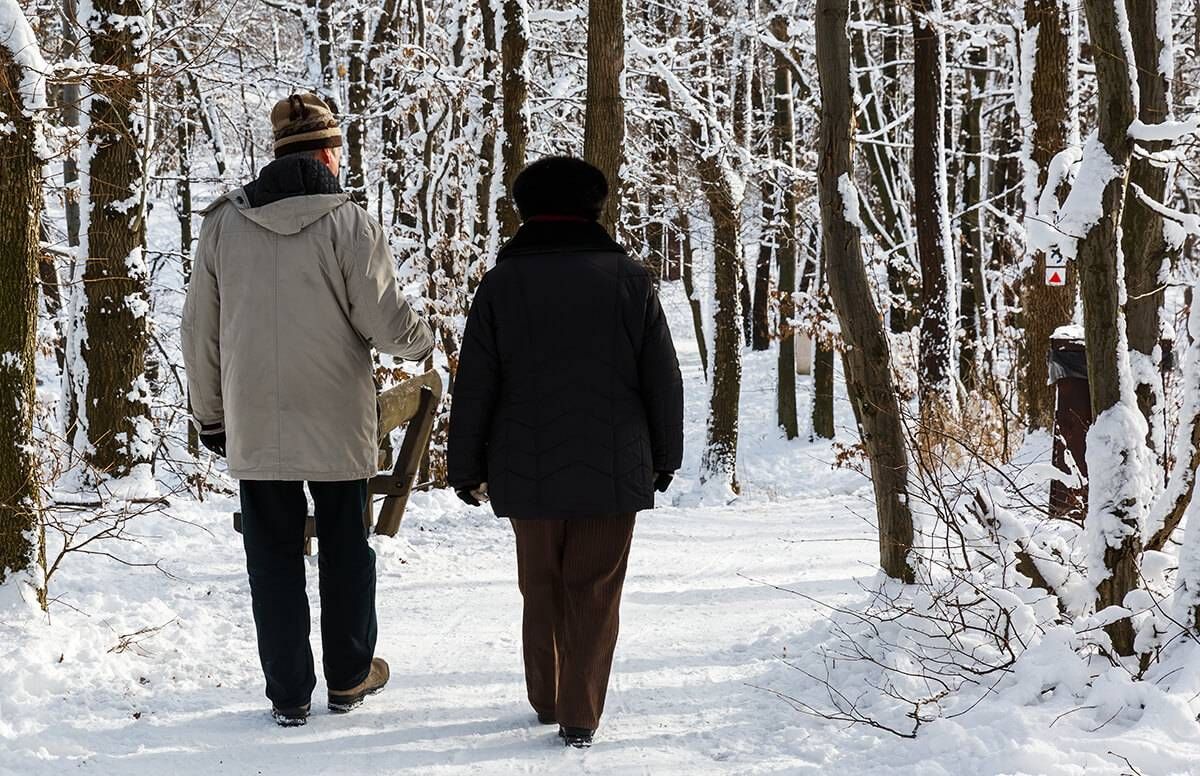8 Tips on Walking to Avoid Winter Weight Gain
Just 22 minutes a day can keep you healthier all year round
(This article was provided through The OpEd Project, whose mission is to increase the range of voices and quality of ideas we hear in the world.)

The leaves are falling from the trees, and you’re likely making plans for Thanksgiving, Christmas and other winter holidays. What you may not plan for is how to avoid winter weight gain in the face of all of those tasty and tempting snacks and meals.
However, you can plan now to combat weight gain. You already know that eating in moderation is a great place to start. But there is also something else that you can do that is super important: Be more physically active.
Simply put, physical activity is just downright amazing for your health. Among all of the really wonderful things that it does, being physically active every day can help people control weight gain.
Walking: A Great Choice
The easiest and most popular aerobic activity is walking. If you are not already part of the 145 million American adults who walk to be more physically active, then it is time to join.
Unlike some types of exercise, walking is a realistic activity that you can do at any age, and with different health conditions, including many disabilities. Here are eight tips to keep you walking more this winter, and staying healthier this holiday season:
1. Dress appropriately for cold weather walking. Wear comfortable walking shoes or boots. Wear loose-fitting clothing and dress in layers that can be easily removed as you warm up while walking. Choose clothing that will keep you warm and dry. And don’t forget those ever-important accessories: A warm hat, scarf and gloves will keep you from losing too much body heat and exposing your skin to cold air.
2. Plan ahead for walking in the cold. If you are one of the lucky people who can walk whenever you desire, you may want to walk during the warmest part of the day. If it’s windy, try to start your walk facing into the wind, so the return walk is easier. If you become chilled, it is time to turn around and get back inside. If you are walking after dark, wear reflective clothing and carry a flashlight. And remember, your body still needs water after walking — even in cold weather.
3. Find great places to walk (outdoors and indoors). America is becoming a more walkable place. Find great outside routes to walk in your neighborhood. But if it is too cold, icy, snowy or just not safe, there are other places where you can get your walking in. Join your local gym, or find a school or community building that has open walking hours. You can always find an indoor mall. Also, you may want to consider walking around your building at work to get in additional steps.
4. Find a walking partner. Some people prefer solitude when they walk, but many people love to have a walking partner. If you enjoy walking with others, pick someone with whom you can talk and enjoy the scenery. Just remember to walk with someone who will keep you moving, but not outpace you. And find someone who is committed to walking regularly.
5. Start a new holiday walking tradition. Another great way to get others to walk with you is to recruit your own family and friends. Ask them to take a brisk walk with you before or after you sit down to eat that holiday meal together.
6. Use a physical activity monitor. There is always a certain amount of satisfaction that comes at the end of the day when your physical activity monitor lets you know that you have met your step goal. You can be even prouder of yourself if you have done that on a cold winter day. There are great choices on the market that come with many options, like joining groups, and monitoring your health. And most smartphones now have monitors built in, or are available through the app store.
7. Talk with your health care provider if you have concerns. If you have not been physically active, check with your health care provider to make sure it is fine for you to start walking. For the vast majority of people, walking is a safe activity.
8. Just get started and keep moving. Walking briskly 22 minutes a day (for a total of 2½ hours a week) gives you wonderful health benefits (including helping to control weight gain). As a nurse practitioner, I know that the greatest challenge for many of my patients is just getting started. Just begin with a short walk. Then think creatively about how you can get more steps in. Before you know it, you will become a regular winter walker.

